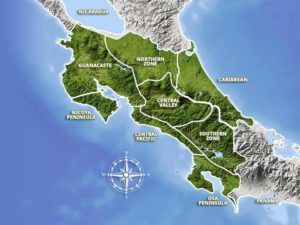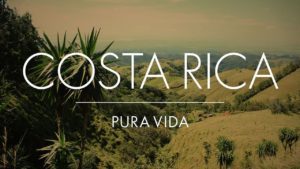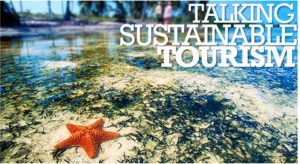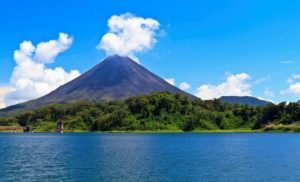
An online definition states that “Tourism is the business of providing services such as transport, places to stay, or entertainment for people who are on holiday.
Nowadays tourism is a lot more. It is an umbrella name that designates many different variations: cultural tourism, medical, adventure, entertainment, relaxation. No matter why we do it: leisure, business, work, social, family and even health reasons, tourism is now a force of nature.
The activity has become one of the most important pillars of the global economy.
- It generates many side benefits, such as jobs and infrastructure.
- Its influence goes from boosting both large hotel chains to family concerns.
- It drives tour operators, airlines and all sorts of specialized companies to improve the quality of their services and, in addition to a comfortable stay, to offer tourists a wide range of innovative alternatives.
Since 1980, on September 27, many countries celebrate World Tourism Day. The main purpose of this date is to promote the importance of tourism, highlighting its social, cultural, political and economic values. This year’s theme is the impact that digital technologies have had on the industry. Here are some examples:
- The Internet allows travelers to have access to many differentiated products.
- According to Skift, in 2013 “travelers made 38 visits to travel sites before purchasing a vacation package.”
- They can tailor and plan every aspect of their trip beforehand, according to the experience they want to have.
Secrets to Success

With an amazing array of landscapes, a legacy of historical and cultural wealth and teeming with biodiversity, Costa Rica has seen a steady growth of tourism for the last 40 years. This is the result of dedicated governmental policies, a countrywide service culture and a commitment to protect the environment.
The Costa Rican tourism industry, with lots of small and medium infrastructure owned by national entrepreneurs, employs mainly Costa Rican handwork at all levels. It also exhibits a good deal of development in rural areas. This has allowed the country to retain a greater part of the economic value generated by the activity.
Nowadays, Costa Rica is well-positioned as a world tourist destination and tourists represent one of the main sources of foreign exchange for its economy. A report by Vector ITC indicates that:
- In 2017, Costa Rica made the top 10 in several tourism-related internet searches. The country is one of the most googled up in Central America and the Caribbean, Canada, the United States, and Europe.
- It is one of the destinations that receive more tourists in Central America and the Caribbean.

Data from the Instituto de Turismo de Costa Rica (ITC) indicates the total arrival of international visitors remained on the increase. In 2016, the figure reached 2,925,128 and in 2017 the number was 2,959,869
From the point of view of income, the generation of foreign currency went from $117 million, in 1983, to $2,849 million, in 2015, the last data included in the report.
- On average visitors spend 13 nights, with the exception of Europeans that stay 17, with an approximate cost of $ 1,500, since most travel with their families.
- There is currently around 15,000 rooms and 1200 tourism-oriented companies in the country.
Of course, not everything about tourism is picture perfect.
Massification vs Sustainability

Despite all the benefits generated by the activity, conventional tourism can have diverse negative effects: erosion, overcrowding, overexploitation of resources, pollution, damage to the local flora and fauna, traffic jams, vandalism to name just a few.
Thus, the concept of sustainable tourism has become increasingly important. According to the World Tourism Organization (WTO) Sustainable Tourism is: “Tourism that fully takes into account the current and future economic, social and environmental impacts to meet the needs of visitors, the industry, the environment and of the host communities.” Basically, it has to do with the awareness of the negative impact that conventional tourism can have on the environment, as well as on the social and economic structure in which takes place, and the will to reduce these effects.
CST
20 years ago the Costa Rican Tourism Institute together with the International Organization for the Conservation of Nature (IUCN), the University for Peace, INBio, the Ministry of Environment and other entities, created the Certificación para la Sostenibilidad Turística (Tourism Sustainability Certification) a tool to measure sustainability.
This program aims to categorize and certify tourism operators using parameters like the interaction between a company and the environment, its internal systems and processes for waste management and the use of technologies for saving light and water or the way a company designs a tourist product, according to the country’s market trends, the country’s own conditions and how it will be carried out.
Similar initiatives have been adopted in countries like Colombia, Bolivia, Spain, and Brazil and have contributed to diminishing the undesirable effects of tourism.
Into the Future

Costa Rica aims to attract a million more tourists by 2021. The goal is going to require more of everything tourism: lodgings, transportation, infrastructure, amenities. Above all, in order to continue being successful, Costa Rica’s tourist industry must adapt and innovate to safeguard the country’s brand name creating tourism ventures that adhere to the low-impact approach and foster sustainable human development.
Sustainable tourism does not only apply to hotels, tour operators or even the host country. It also involves the tourists themselves.
How to Be a Good Tourist

There are many ways a visitor can exert a positive influence on the places he visits and at the same time maximize his enjoyment.
– Is respectful, informed, curious, and grateful.
– Adapts his consumption, behavior, and the way he relates to people to the new surroundings.
– Chooses sustainable means of transport, collective, efficient and clean vehicles.
– Is aware of the negative effects that the companies he is using may have and avoid those in which bad work practices or negative impacts may affect the environment and local populations and choose others with a better performance.
Strives to have a minimal environmental impact by optimizing the use of the resources.
– Helps maintain essential ecological processes in order to preserve the biological diversity.

